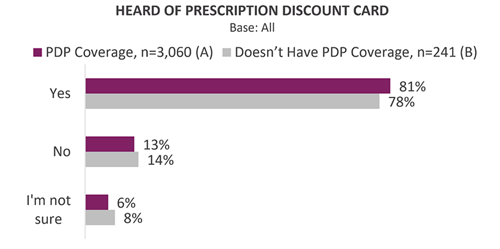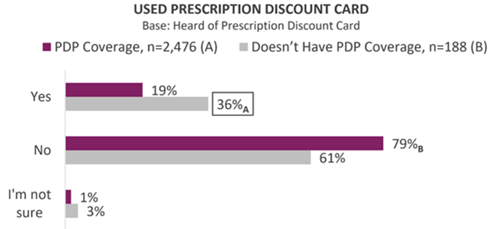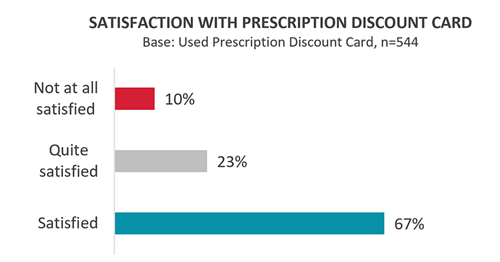Insurers that offer Medicare Part D prescription drug program plans (PDP), beware. Member use of a prescription drug discount card is associated with lower intent to stay with their plan,
Introduced in 2006, the Medicare Part D prescription drug program (PDP) now covers over 49 million of the nearly 64 million Medicare eligibles nationwide.1,2 However, despite the widespread adoption of Part D coverage, the cost of prescription drugs remains a hot button issue for seniors.
Prescription discount cards are billed as a method for consumers to drive their drug costs down. By signing up for a discount card and showing it at the pharmacy, consumers are able to access lower prices that have been negotiated by the card program. However, using a discount card means that consumers are foregoing their own drug coverage from their health insurance or Part D plan. Previously unpublished data from the Deft Research 2021 Medicare Member Experience and Engagement study found that most Medicare members are familiar with prescription discount cards and that many have used them at some point.


As seen on the chart above, nearly twice as many consumers who lack credible PDP coverage have relied on such discount cards, which is understandable. Yet nearly one-in-five consumers with PDP coverage have also dabbled with these cards. The senior population is acutely aware of discount cards and usage is fairly common among both the drug-insured and those without Rx coverage.

For those who used a prescription discount card, the impression was largely positive. However, for insurers offering PDP plans, member use of a prescription drug discount card is associated with lower intent to stay with their plan, as seen in the chart below. It is in PDP carriers’ best interest, therefore, to discourage their members from using such cards.

Ensuring prospective members’ drugs are covered by a plan prior to enrollment may help reduce the demand for seniors to rely on prescription discount cards. Likewise, educating current members on the downsides of a prescription drug discount card, like drug spend not counting toward deductibles or getting out of the catastrophic coverage phase, will help them avoid potentially costly mistakes which otherwise could have contributed to their attrition.
- Medicare Contract and Enrollment Summary Report, CMS, November 2021.
- MA State/County Penetration, CMS, November 2021.
About the author
Jordan Simundson is a director of research and analytics at Deft Research with specialties in Medicare and IFP member consumerism. He is a graduate of the University of Minnesota.
